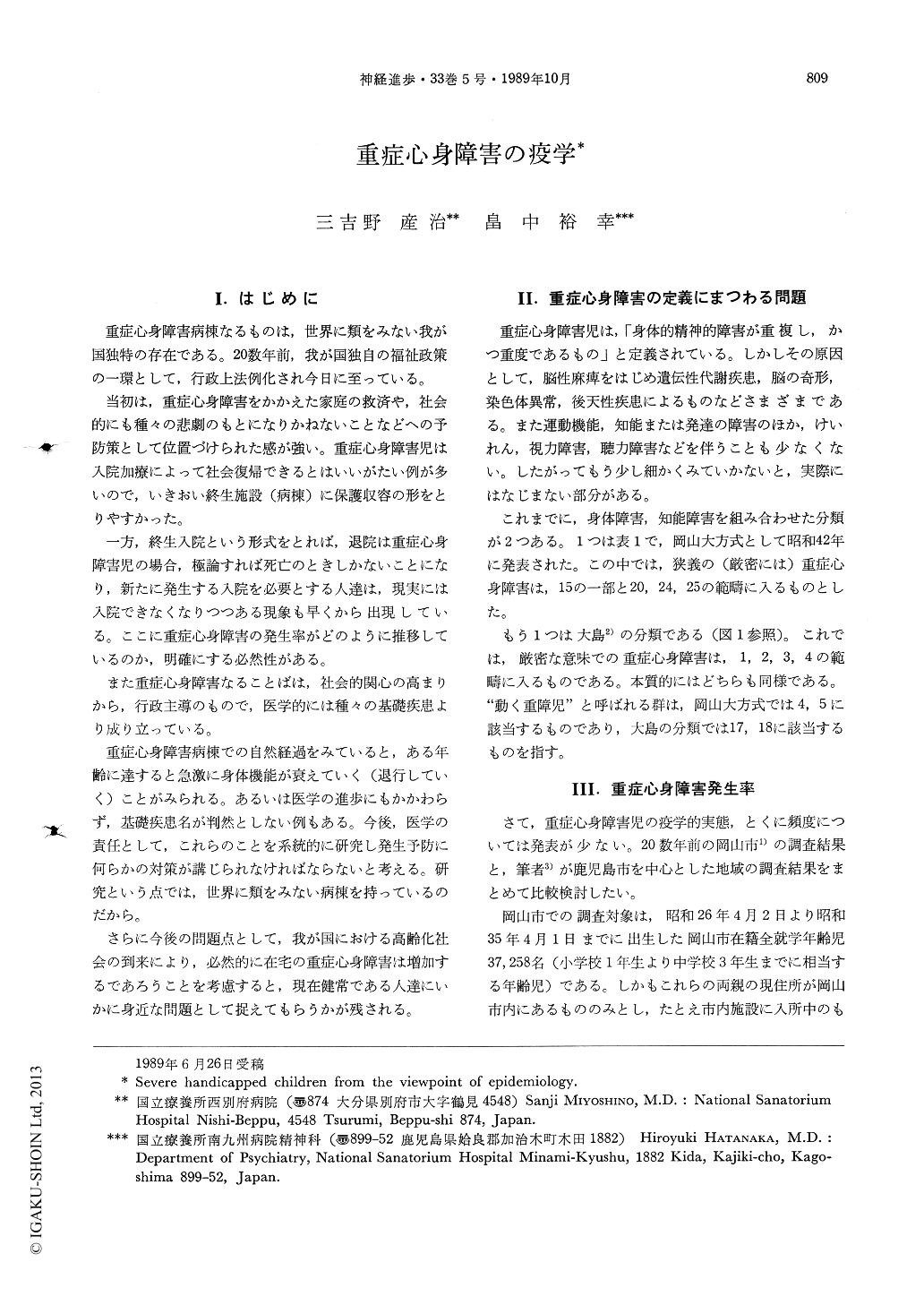Japanese
English
特集 神経疾患の疫学像とその変貌
重症心身障害の疫学
Severe handicapped children from the viewpoint of epidemiology.
三吉野 産治
1
,
畠中 裕幸
2
Sanji MIYOSHINO
1
,
Hiroyuki HATANAKA
2
1国立療養所西別府病院
2国立療養所南九州病院精神科
1National Sanatorium Hospital Nishi-Beppu
2Department of Psychiatry, National Sanatorium Hospital Minami-Kyushu
pp.809-814
発行日 1989年10月10日
Published Date 1989/10/10
DOI https://doi.org/10.11477/mf.1431906333
- 有料閲覧
- Abstract 文献概要
- 1ページ目 Look Inside
I.はじめに
重症心身障害病棟なるものは,世界に類をみない我が国独特の存在である。20数年前,我が国独自の福祉政策の一環として,行政上法例化され今日に至っている。
当初は,重症心身障害をかかえた家庭の救済や,社会的にも種々の悲劇のもとになりかねないことなどへの予防策として位置づけられた感が強い。重症心身障害児は入院加療によって社会復帰できるとはいいがたい例が多いので,いきおい終生施設(病棟)に保護収容の形をとりやすかった。
Several surveys have been performed to evaluate the incidence of severely handicapped children: 0.99%a in Okayama-city (1967), 0.7% in Kagoshima-city (1987), 0.66%, in Kodaira-city, Tokyo (1988).
These results indicate that the incidence is not decreased for the past twenty years. However, it seems that the proportion of cerebral palsy in severely handicapped children is declining.

Copyright © 1989, Igaku-Shoin Ltd. All rights reserved.


